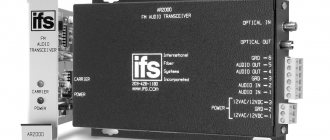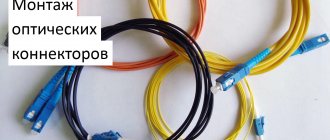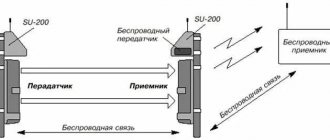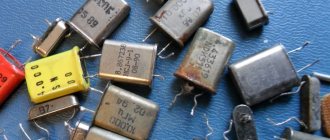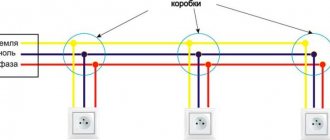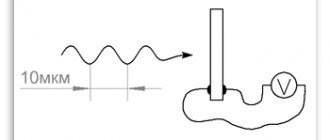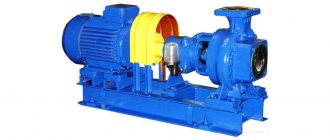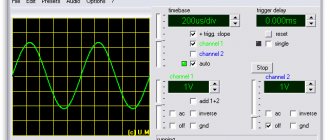In our previous article, we looked at the main types of optical fibers. Among other things, attention was drawn to the fact that the scope of optical fiber is not limited to computer networks. The number of industrial areas that use fiber-optic communication lines (FOCL) is growing.
has extensive experience in supplying fiber optic components for industrial applications. And in this article we will look at the main features of optical fiber from the point of view of the specifics of industrial conditions and provide some specific examples of its application in various fields of industry.
In industrial applications, there is rarely a need for high-speed signal transmission over long distances. Typical transmission speeds are limited to hundreds of Mbit/s, and the length of the communication line is tens to hundreds of meters. These conditions are fully met by standard lines based on twisted pair or coaxial cable, as well as wireless communications. However, in industrial conditions, factors such as security and reliability of information transmission come to the fore. And in this regard, other advantages of optical fiber make themselves felt, significantly distinguishing it from its competitors. First of all, we are talking about the following two features of optical fiber:
- Immunity to electromagnetic radiation (EMR)
. Industrial processes are often accompanied by increased levels of electromagnetic noise, the source of which can be power plants, radio equipment and other technological equipment. Electromagnetic interference can cause data corruption or even complete loss. Unlike its competitors, optical fiber is made from a dielectric material and is therefore completely immune to electromagnetic interference. This makes it possible to lay an optical communication line in close proximity to EMI sources (in particular, to the power supply lines of technological equipment). In addition, fiber optics itself does not create electromagnetic fields in the surrounding area, so there is no crosstalk between adjacent fiber optic communication lines. - Galvanic isolation
. Since optical fiber is a dielectric, there is no electrical contact between the transmitting and receiving sides. This makes it possible to solve a large number of problems associated with the potential difference of the connected equipment, the flow of equalizing current during non-ideal grounding, as well as voltage surges and other emergency situations. Fiber optics provide much higher voltage isolation than optocouplers and other ICs used for galvanic isolation.
For these reasons, in many industrial applications the best, and sometimes the only correct, solution is to use optical fiber. Industrial communication lines based on plastic (polymer) optical fiber (POF) have become very popular, since they fully meet the requirements and at the same time attract the relatively low cost of components and ease of operation with POF. The range of possible applications of optical fiber (POF in particular) in industry is very diverse. Next, we will briefly look at some specific examples taken from the Application Note issued by Avago Technologies (now Broadcom Limited), one of the leading manufacturers of industrial fiber optic components.
Process control
In automated industrial systems, controllers receive control signals from a computer that may be located some distance away. The communication lines that carry these signals are often located along power lines and near process plants. To eliminate the influence of interference on transmitted signals, optical fiber is used. Thus, using optical fiber, it is possible to organize communication between a computer and a programmable logic controller (PLC), as well as communication between several PLCs integrated into a common information network.
Another example is the control of industrial robots, which are designed with electric motors, solenoids and other elements that create electromagnetic interference. The relative flexibility of optical fiber also allows it to be used for communication between moving parts of a robot.
The physics of fiber optic operation
The physical principles of optical fiber operation are based on the principle of total reflection. If we take two media with different refractive indices n1 and n2, with n2< n1 (for example, air and glass or glass and transparent plastic) and send a beam of light at an angle α to the interface, then two events will occur.
The ray (indicated in red in the figure), launched from the top left (along the arrow), will be partially refracted and travel through the medium with a refractive index n2 at an angle α1<α - this part of the ray is indicated by a dashed line. The other part of the beam will be reflected from the interface at the same angle. If you shoot a beam at a flatter angle β (green beam in the figure), then the same thing will happen - partial reflection and partial refraction at an angle β1.
If the angle of incidence α is further reduced (blue beam in the figure), then it is possible to ensure that the refracted part of the beam “slides” almost parallel to the interface (blue dashed line). A further decrease in the angle of incidence (the green ray incident at an angle β) will cause a qualitative jump - the refracted part will be absent. The beam will be completely reflected from the interface between the two media. This angle is called the angle of total reflection, and the phenomenon itself is called total reflection. The same will be observed with a further decrease in the angle of incidence.
Data acquisition and measurement systems
Control and measurement systems also play a great role in production. It is often necessary to monitor various parameters of high-voltage equipment. Processing of the received data is carried out using low-voltage microprocessor technology. Therefore, reliable galvanic isolation is required for signal transmission, which is achieved by using optical fiber.
The GPIB (IEEE-488) interface bus is also widely used in automated instrumentation systems. Using optical fiber, you can increase the distance between the measuring device and the computer that processes the information. This ensures galvanic isolation and protection from electromagnetic interference, which is critical from the point of view of measurement accuracy.
Power equipment
Optical fiber is used not only to transmit information from one industrial installation to another. Fiber optic interfaces are often used within equipment to communicate between its parts. An example is the control of IGBT transistors that serve as electronic switches in inverters, switching power supplies and other power devices. The optical fiber provides reliable galvanic isolation between the low-voltage microcontroller that generates control signals and the gate of the power transistor.
Another power electronics device that uses optical fiber is the Static VAR Compensator (SVC), used in high-voltage systems to reduce load on the distribution network, improve power quality, and reduce costs. The main elements of SVC are Thyristor-Switched Capacitors (TSC) and Thyristor-Controlled Reactors (TCR), the switching of which produces strong electromagnetic fields. Therefore, an optical fiber that is immune to interference and provides galvanic isolation is used to transmit control and feedback signals to the SVC.
Fiber optic line device
A fiber-optic line transmits a light signal created by an LED or laser. An electrical signal is generated in the transmitting device. The end device also needs a signal in the form of electrical impulses. Therefore, you will need to transform the original data twice. A simplified diagram of a fiber optic line is shown in the figure.
The signal from the transmitting device is converted into light pulses and transmitted via an optical line. The power of the emitters on the transmitting side has limitations, so on long lines, at certain intervals, devices are installed that compensate for attenuation - optical amplifiers, regenerators or repeaters. On the receiving side there is another converter that transforms the optical signal into an electrical one.
Alternative energy installations
From what has been discussed above, it is clear that optical fiber can be used at different stages of the same technological process. As an example, let’s consider an industry area that has been gaining popularity in recent years, such as alternative energy. The most common areas today are wind energy and solar energy.
Wind generator
(WPP - wind electric installation) converts the kinetic energy of the wind flow into electrical energy. The design of a wind generator includes rectifiers, inverters, transformers and filters that carry out the necessary transformation of the generated electricity for its subsequent transmission over long distances. Connecting the power equipment of wind generators using optical fiber eliminates the influence of voltage surges and electromagnetic interference on the transmitted signals. Fiber optic components may be located in close proximity to equipment and power lines. Optical fiber can be used in the following wind power plant equipment:
- Gate drivers for power transistors in rectifiers and inverters.
- Instrumentation and communication panels.
- Turbine control units.
- Systems for monitoring environmental conditions and equipment condition.
- Information networks of wind power plants.
In a similar way, optical fiber is used in the equipment of power plants based on solar panels, which convert solar energy into electric current. Optical fiber in solar power plants
used in the following systems:
- Gate drivers of transistors in power inverters.
- Instrumentation and communication panels.
- Substation automation and relay protection equipment.
Quartz single mode fiber
In single mode fiber
, as the name suggests, only one (fundamental) mode of radiation propagates. This is achieved due to the very small diameter of the core (usually 8-10 microns). The diameter of the optical cladding is the same as that of multimode fiber - 125 microns. The absence of other modes has a positive effect on the characteristics of the optical fiber (there is no inter-mode dispersion), increasing the transmission range without relaying to hundreds of kilometers and the speed to tens of Gbit/s (we give standard values, and not those “record” ones that are achieved in research laboratories). Attenuation in single-mode fiber is also extremely low (less than 0.4 dB/km).
The wavelength range for single-mode fiber is quite wide. Typically transmission occurs at wavelengths of 1310 and 1550 nm. When using wavelength division multiplexing technology, other wavelengths are also used (more on that below).
Classification.
The range of quartz single-mode fibers is very diverse. The international standard ISO/IEC 11801 and the European EN 50173, by analogy with multimode fiber, distinguish two large classes of single-mode fibers: OS1 and OS2 (OS - Optical Single-mode). However, due to the existing confusion associated with this division, we do not recommend focusing on this classification. Much more informative are the ITU-T G.652-657 recommendations, which highlight more types of single-mode fibers.
The table below provides a brief description of these fibers and their applications. But first, a couple of comments. Intermode dispersion, which is absent in single-mode fiber, is not the only mechanism for optical pulse broadening. In single-mode fiber, other mechanisms come to the fore, primarily chromatic dispersion, due to the fact that no radiation source (even a laser) emits strictly monochromatic radiation. In this case, there is a wavelength at which the chromatic dispersion coefficient is zero. In most cases, operating at this wavelength is preferable, but not always.
| Fiber type | Description | Application |
| G.652. Single-mode undispersion-shifted fiber | The most common type of single-mode fiber with a zero dispersion point at 1300 nm. There are 4 subclasses (A, B, C and D). G.652.C and G.652.D fibers are characterized by low attenuation near the “water peak” (“water peak” refers to the region of high attenuation in a standard fiber around the wavelength of 1383 nm). | Typical Applications. |
| G.653. Singlemode Zero Dispersion Shifted Fiber | The zero dispersion point is shifted to a wavelength of 1550 nm. | Transmission at a wavelength of 1550 nm. |
| G.654. Single-mode fiber with shifted cutoff wavelength | The cutoff length (the minimum wavelength at which a fiber propagates a single mode) is shifted to wavelengths around 1550 nm. | Transmission at 1550 nm wavelength over very long distances. Main submarine cables. |
| G.655. Non-zero dispersion shifted single-mode fiber | This fiber has low, but non-zero, dispersion in the 1530-1565 nm range (non-zero dispersion reduces non-linear effects when multiple signals propagate simultaneously at different wavelengths). | Wavelength Division Multiplexing (DWDM) transmission lines. |
| G.656. Non-zero dispersion shifted single-mode fiber for wideband transmission | Non-zero dispersion in the wavelength range 1460-1625 nm. | Transmission lines with wavelength division multiplexing (CWDM/DWDM). |
| G.657. Single-mode fiber insensitive to macrobending loss | A fiber with a reduced minimum bend radius and lower bending losses. There are several subclasses. | For installation in confined spaces. |
Application.
Single-mode silica fiber is by far the most common type of optical fiber. With its help, you can organize the transmission of high-speed signals over very long distances, and the use of channel wavelength division multiplexing technology (CWDM/DWDM) allows you to increase the capacity of the communication line several times. Single-mode fiber is often used over short distances, for example, in local networks.
Optical arc protection systems
The next example of using optical fiber is somewhat different from all the previous ones, since here the optical fiber acts not just as a communication channel, but as the main element of the system. We are talking about optical arc protection systems in complete switchgear (SGD) of electrical substations. Such systems record the optical emission of a flash of light that occurs during an arc short circuit. This approach allows minimizing the switch operation time in the event of an accident. The sensitive element is usually a lens optical sensor that collects flash radiation and transmits it via optical fiber to the control device, or a fiber-optic sensor, which is a piece of optical fiber in a transparent shell that detects light over its entire surface. Sensors can be controlled remotely. You can read more about optical arc fault protection systems here.
Main characteristics of MM fibers
The main parameters of MM OM are described and regulated in rec. G.651. However, rec. G.651, of course, does not reflect all the diversity of MM OV brands. The specifications given in catalogs by manufacturing companies are much more informative.
The parameters listed in the specifications are usually quite clear, but some of them need clarification.
- Fiber type - standard or gradient MM fiber. Sometimes gradient OB is referred to as GIF;
- Working transparency windows - only the used windows are shown: in the vicinity of 850 nm and 1310 nm;
- Attenuation, attenuation gain, bandwidth, chromatic dispersion and group refractive index are given for two wavelengths - 850 and 1310 nm, corresponding to the transparency windows used;
- Broadband or parameter BW (band width) - has the dimension [MHz∙km], i.e. it corresponds to the bandwidth provided by a fiber-optic line over a length of 1 km (this parameter is sometimes called the broadband coefficient, although it is more correct to talk about the relative/normalized bandwidth). For a fiber optic line of length L, the actual bandwidth provided is calculated as BW/L, i.e., it is inversely proportional to the length of the line. This parameter is normalized only for MM OFs, for which it is difficult to calculate the equivalent mode dispersion. Corning often lists the guaranteed transmission distance of gigabit (GE) or 10 gigabit (10GE) Ethernet, which is more informative because it takes into account the actual BW of the Ethernet signal.
- Dynamic fatigue is a dynamic fatigue resistance factor that determines the ability of the fiber to withstand long-term mechanical loads (the higher n, the greater the reliability of the fiber).
Other automated systems
The need for centralized control of various installations also arises in other systems not related to production and energy. Let us give two examples in which it is advisable to use optical fiber.
A network of POS terminals in stores, banks and other institutions.
The use of optical fiber to transmit information between POS terminals and the central computer guarantees high communication speed and safety of data on transactions performed. This is especially important in large areas where sources of strong interference may be present.
Game entertainment centers.
Fiber optics can also be used to automate gaming entertainment systems, namely for connecting the central computer to gaming machines, internal machine connections, and communication between gaming machines for multiplayer gaming.
Checklist of parameters required to design a fiber optic transmission system
| Purpose (brief description of the task): | |
| Analog signal parameters: | |
| Input voltage | |
| Input impedance | |
| Output voltage | |
| Output impedance | |
| Signal to noise ratio | |
| Communication method (DC or AC) | |
| Bandwidth | |
| Connectors | |
| Other data | |
| Digital signal parameters: | |
| Interface type (RS-232, 422, 485, etc.) | |
| Data transfer rate | |
| Communication method (DC or AC) | |
| Allowable bit error rate | |
| Connectors | |
| Other data | |
| Power supply requirements: | |
| Voltage | |
| Current | |
| AC or DC voltage | |
| Connectors | |
| Other data | |
| Fiber optic line requirements: | |
| Line length | |
| Wavelength of light | |
| Acceptable losses | |
| Optical connectors | |
| Fiber type | |
| Fiber Diameter | |
| Installation conditions | |
| General requirements: | |
| Case size | |
| Installation method | |
| Environmental Characteristics | |
| Operating temperature range | |
| Storage temperature range | |
| Other data | |
| Additional comments: | |
Medical equipment
Another area where optical fiber is actively used is medical equipment. The insulating properties of optical fiber provide protection for the patient, personnel and electronics from high-voltage equipment. An example is an X-ray machine. To generate radiation, a high voltage is applied to the X-ray tube. Optical fiber provides galvanic isolation between the high voltage source and the low voltage control equipment. This also eliminates the influence of electromagnetic interference that occurs when switching high currents and voltages.
Of course, it is impossible to list all the possible industrial applications of optical fiber. However, this area of telecommunications is actively developing both throughout the world and in our country.
To implement these and other similar information transmission systems, industrial fiber-optic components are produced that meet the harsh industrial conditions. Components of the Versatile Link line, manufactured by Broadcom Limited (EFO LLC is the official distributor of Broadcom), have earned great popularity among developers. This line of components is designed to work with plastic optical fiber and includes discrete optical transmitters and receivers, connectors, adapters (sockets) and POF patch cords. Versatile Link components are reliable, cost-effective, and easy to use, making them suitable for use in virtually any industrial application. In our next article we will do a detailed review of this line of components. You can view the range of Versatile Link products on the website dedicated to fiber optic components - InFiber.ru:
- transmitters
- receivers
- connectors
- adapters
- POF cable
- development boards
